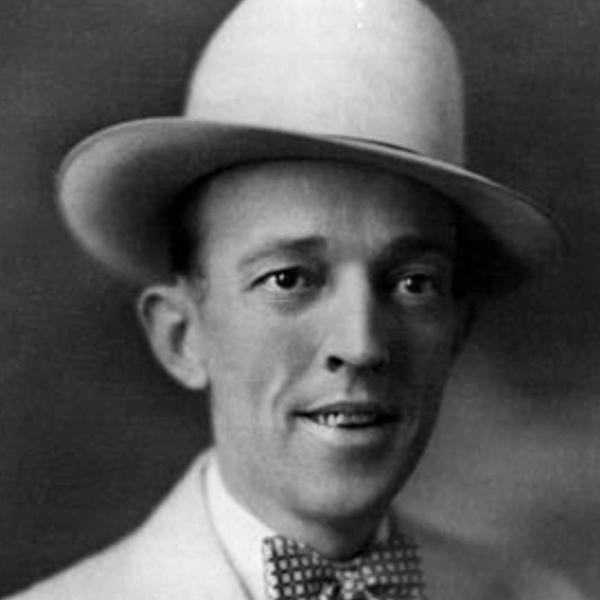




Link copied

In the summer of 1927, local musicians from all over Virginia and Tennessee gathered in Bristol, Tennessee, to audition for the Victor Record Co., then the biggest producer of phonograph recordings in America. The singers and instrumentalists had been attracted by advertisements in the local newspapers that Victor engineers would be in Bristol for ten days to audition those who wanted to try out for a recording contract with the company. The engineers set up a recording studio in an empty warehouse and waited for business.
The musicians, arriving by train, car, even by horse & buggy, were mostly full-time farmers, millworkers or railwaymen and part-time musicians, more used to playing for local churches, picnics, dances and fiddle contests than concert halls. They wanted to showcase their talent by making a record, boost their musical reputation among their neighbours and make a few dollars. Their repertoire may well have included a few popular songs and tunes, but in the main was generally built from the ‘down home’, folk music of the southern states of America – variously called ‘Hillbilly’ or ‘Old-Time Tunes’.
Over the next few days, Ralph Peer, the Victor talent scout, recorded songs by the Tenneva Ramblers, Alfred Karnes - a gravel-voiced gospel singer - and the man who, more than any other, helped turn country music into the billion-dollar industry it has become today: Jimmie Rodgers.
Rodgers recorded just two songs for Peer, ‘The Soldier’s Sweetheart’, a sentimental ballad about a boy who goes to war but doesn’t return, and ‘Sleep, Baby, Sleep’ a traditional lullaby. Jimmie sang both in a plaintive style with simple guitar accompaniment; no gimmicks, no novelties. Peer paid him a recording fee of twenty dollars and, despite his later comments that he immediately recognized Rodgers talent, probably thought that was all he would see of Jimmie Rodgers. Jimmie, however, was highly pleased at the outcome and with some extra cash borrowed from his wife’s sister, later set out for Washington to be closer to Victor’s New York headquarters when they called him to make more records.
Until the Bristol recording session, Jimmie’s life had not exactly been successful. A weakly child, his mother died when he was six from tuberculosis, and Jimmie and his brothers were farmed out to family members while his father looked for work on the railroads. Rarely in school, Jimmie sought the companionship of the rounders and gamblers in the barber shops and pool-halls of the small towns of the Mississippi. Later he worked the railroads, a succession of low paid jobs – switchman, fireman and brakeman. As fast as he earned a dollar he spent it, buying drinks, loaning to friends or gambling - it was just part of his generous, easy-going nature.
But it was money problems that resulted in the break-up of his first marriage to farmer’s daughter Stella Kelly, a union which lasted barely a year. Jimmie’s work was irregular and poorly paid. He was generous to a fault with what he did earn, consequently having his father-in-law bail the couple out with rent and groceries. The Kellys liked Jimmie but worried about his lack of ambition and his tendency to take little seriously. In late 1917, heavily pregnant, Stella returned to her parents’ home. The couple parted amicably and, as she later told the writer Nolan Porterfield, “Jimmie was a dear, but it would never have worked. We were just too young”.
In his teens, Jimmie had discovered vaudeville, the touring variety shows that were extremely popular in the early twentieth century. With their singers, comedians, dancers and jugglers, they offered a colourful break in the routine of everyday life, and Jimmie regularly expressed a desire to be an entertainer. Somewhere around this time he picked up the basics of the ukulele, banjo and eventually the guitar, he was soon rarely seen without a stringed instrument. Stella Kelly recalled him asking friends around to play and sing in a constant desire to learn and improve. John Atwood, a friend from his railroad days, remembered seeing him regularly playing guitar with the African American gandy-dancers and spike drivers of the rail yard crews, singing ‘Casey Jones’ in a ‘sweet, mellow voice’.
By 1920, Jimmie was courting again, this time with Carrie Williamson, the 17-year-old daughter of the Reverend Williamson of Meridian, Mississippi. After a runaway marriage, they settled in Meridian. It seems likely that the well-to-do Williamson family were not overjoyed at their daughter marrying the footloose railroader. Descriptions of Jimmie at this time describe a tall, slim young man, good looking with soft brown eyes, a ready smile and fond of a joke and a drink. Always smartly dressed, Jimmie clearly had a reputation around the Meridian area.
Nevertheless, they accepted him into the family and the couple found a temporary home with the Carrie’s sister, but they were soon on the move from town to town chasing those elusive jobs – through Alabama, Louisiana, even into West Texas. By 1921, with Carrie expecting her first child, they were back in Meridian living with the Williamsons. Their daughter, named Anita, was born at the end of January. While Jimmie may sometimes have been casual in his attitude to life, he was a devoted father, lavishing time and whatever money he did have on his children.
In 1923, after taking a job that travelled him through Texas and New Mexico and on to Colorado and Utah, Jimmie came home with a hacking cough and a fever that, after choosing to ignore, resulted in him collapsing with a haemorrhage whilst visiting he father. In the early twentieth century Tuberculosis was the leading cause of death in the US - there was no certain cure and doctors could not even agree on the best form of treatment. Those who could afford full-time care in a sanatorium perhaps stood a chance, but for working men and women, that old TB would get you sooner or later. Jimmie tried to ignore his illness as much as possible, but years later he would make clear his attitude to the disease in the song ‘Whippin’ that Old T.B.’
The physician who treated Jimmie prescribed complete bed rest, but of course with his financial problems, there was little chance of that. Having been persuaded to enter a charity hospital in Meridian, with good rest, care and food he began to recover but, bored with his slow recovery, he regularly slipped out to visit his old haunts - understandably, the hospital discharged him. It was now clear that he could not continue to work the railroads - the hard work in all weathers would soon kill him. A change of lifestyle might just save his life, and his dream of becoming an entertainer seemed just the answer. In late 1923, touring tent show ‘Terrell’s Comedians’ visited Meridian, and Jimmie introduced himself to Terrell. Terrell certainly thought the young man had an original talent and took him on for a tour of Mississippi and Alabama. Jimmie was finally an entertainer.
Jimmie was never a great musician, but he had a relaxed way of putting over a song - his yodelling was unique and he made the falsetto break between verses his own. Sometime in the early 20’s, when Jimmie was working in New Orleans, he had crossed paths with the singer and guitarist Goebel Reeves. Reeves later claimed to have taught Jimmie how to yodel, but this seems unlikely, as by the time Jimmie auditioned for Terrell he was already an accomplished yodeller. He probably owed a great deal to the falsetto singing of the blues singers he heard in the rail yards and small towns of the south. Jimmie also picked up black mannerisms and style and included them in his own work - many of his songs are within the standard three-line blues format – AAB – with the blue yodel between verses, which were often interchangeable with black song. And that was a major part of his legacy: in an age of strict racial segregation, he made the blues acceptable to white audiences.
Once Jimmie joined Terrell’s tent show, he was on the road to becoming a professional musician, but the next few years were hard going. Despite jobs with medicine shows he often had to return to railroad work to make ends meet until another musical job turned up. Jimmie’s worsening medical condition meant that heavy work was often followed by periods of sickness, and even Jimmie’s cure-all of ‘good sippin’ whiskey’ didn’t always help. Understandable, then, that the Rodgers’ would put their faith in Ralph Peer and the Victor Recording Company.
In October 1927, Jimmie’s first record was released and he was confident of a call to make more records. But by November 1927, having heard nothing from Victor, Jimmie decided to go to New York, telling Peer that he ‘happened to be in New York and could do another session’. Surprisingly, Peer arranged for a second session of recordings and it was these that really kick-started Jimmie’s rise to fame.
After recording several songs at the end of November, Peer apparently suggested that Jimmie try out some of his blues material. The result was 'T for Texas', which Peer labelled 'Blue Yodel'. A standard twelve bar blues, using old blues stanzas, and a distinctive and highly original yodelling break, this became the hit of the session when it was released. The exact sales figures are unknown, but by early 1928 Jimmie was earning over $2000 a month from record sales alone.
The reviews of Blue Yodel are interesting :
WHITE MAN SINGING BLACK SONG
WHITE MAN GONE BLACK
Clearly Jimmie had crossed the racial divide with many of his songs, creating a new craze for yodelling and blues-styled material. In early 1928, the singer Frankie Marvin cloned Rodgers’ Blue Yodel with the Brunswick Company, but Marvin was quickly followed by other singers adopting Jimmie’s style – Jimmie Davis, Bill Bruner, Cliff Carlisle, and Gene Autry, ‘the Singing Cowboy’ and many others.
Jimmie had achieved success, but it came at a high price: performing and even recording sessions were exhausting for a man in the final stages of tuberculosis. He could perform for no more than twenty minutes on stage and often had to cancel shows at short notice. As he acknowledged himself, “my time ain’t long”. Jimmie made no secret of this and even noted it in song. In ‘TB Blues’ he told his audience,
" I’ve been fighting like a lion / looks like I’m going to lose / 'cause their ain’t nobody ever whipped the TB blues"
A brave man, indeed!
The collapse of Wall Street and the subsequent depression had a disastrous effect on the music industry. Record sales fell, contracts were cancelled and many touring shows went out of business. Jimmie’s career was not as badly affected as many, but he often helped friends with loans or free performances. This took a toll on his health and bank balance. After a particularly bad health scare in 1931, he consulted a lung consultant and was given a diagnosis of two years. Facing up to the situation he realised he had few assets, no savings and a lot of debts and had to provide for his family.
The last few months of Jimmie’s life were very productive in producing shows, radio and recordings. Peer realised he was working too hard and wrote to the singer advising "watch your health carefully, as it is worth more than 10,000 per". But in early 1933, desperate to boost his finances, he set up another recording session for May. He travelled to New York with a private nurse and checked into the Taft Hotel. Over the next few days he recorded a number of songs but was clearly getting weaker. During a visit to Coney Island with his nurse, he suffered severe spasms. He died that night, 26 May 1933, alone in his hotel room. He was 36 years old.
Jimmie’s popularity was greatest in the Southland, but his records sold in the north, Canada, the UK, Australia and even in Africa and India. In Japan there were, and still are, many Rodgers enthusiasts - clearly, he had universal appeal. His relaxed approach to a song, his original style and his obvious sincerity attracted admirers and imitators everywhere.
Jimmie’s music is hard to categorise: sentimental ballads, railroad songs, risqué blues, autobiographical songs like ‘Jimmie the Kid’ or ‘TB Blues’, and even novelty songs like ‘Everybody Does It in Hawaii’. But therein, perhaps, lay his appeal to many different audiences.
In wider terms it was Rodgers who showed record executives that there was talent to be found in southern roots music, something that would become another highly profitable strand for the industry. He also provided many of the signs, symbols and styles of modern country music - from railroads to singing cowboys, hard-drinking rounders to mother and home. But in the final analysis, what really counts in Jimmie’s story is that almost a century after his death, people continue to listen to his music and sing his songs. That’s a fine legacy for any singer.
Photography courtesy of The History Collection & Alamy Stock Photo.
For more on Jimmie Rodgers, see below:





